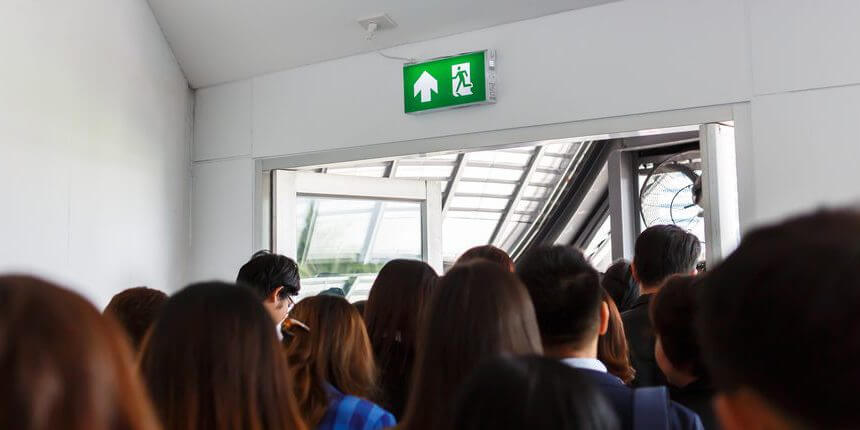Preparing Students for Emergency Situations

Emergencies can strike at any moment, and if one happens while you are on campus, the faculty and student body need to be informed of the procedures to follow to ensure their safety. An emergency may come in any form, such as natural disasters, chemical spills, or terror threats. FEMA has created a website that provides guidelines for lockdowns, sheltering, and evacuation procedures in case of an emergency.
To evacuate a campus as quickly as possible for any reason, you need to have an established evacuation plan in place. You need to be able to communicate with your student body as soon as emergency strikes. It is essential to implement and continuously test your communication systems. If you do not currently have a communication system in place, improvise with something like a bullhorn that can be heard for a long distance and through walls.
A general rule for placing emergency exits in your building is to make sure that there are two on every floor and that they are kept clear of obstruction. You also need to hand out emergency roles, such as a floor warden for each floor who is responsible for everyone on that floor being alerted and evacuated. If you have students with limited mobility caused by disabilities or special needs, consider working with your local fire department to create a concrete evacuation plan.
Every emergency exit should be equipped with a strategy for wounded patrons. The Belluscura Slyde is an evacuation device, similar to a stretcher, that can be operated by 1-2 individuals to assist anyone injured in escaping. The lightweight design allows for one person to carry multiple Slydes into an emergency situation and only requires one person to move someone who has become immobilized, regardless of size.
When caught in a tornado, you will need to take shelter within your building rather than evacuating it. FEMA’s website advises the use of a distinct sounding alarm in case of a tornado, so people know to take shelter rather than evacuate. You will want to use the strongest part of the building as your shelter; for most buildings that are the basement or a ground-level floor.
In the event of a different emergency, such as a school shooting or a chemical spill, you should also have a specific plan for taking shelter. Students should avoid any windows and move as close to the center of the building as possible. Tell your everyone to avoid the basement in such emergencies and go to the second floor or higher. Instruct your faculty and students to remain sheltered until the go-ahead has been given by public officials to return to normal. In the event of campus violence, students should find the nearest hiding spot and remain quiet. Instruct everyone to stay in a room with a locked door and to barricade the door if possible.
In today’s society, you never know when somebody is going to seek to harm people in your building. In the event of any emergency, it’s crucial for universities to have a plan in place to make sure their student body can return home when the emergency is over.
